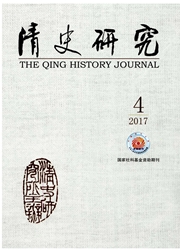

 中文摘要:
中文摘要:
“钱赈”指灾赈中以小额通货为中心的资源调配与赈济机制,其思想源远流长,理应在中国荒政思想中占据重要一席,但一直为相关研究所忽略。清代“钱赈”经历了一个由临时举措到固定惯例,再到成熟制度的演变过程,成熟标志为同治九年“畿南钱赈案”中制定的《会拟办贷章程》。通过考察灾赈中赈款的调拨、运输、兑换、散放、消费、回流、沉淀的各个阶段,可以发现银钱兑换是灾赈中货币流通的核心环节,而钱赈则是该链条的主线。结合先前研究可知,灾荒对清代城乡货币流通具有双重性影响,一方面灾荒会引发灾区严重的钱荒危机;另一方面大规模的灾赈活动会推动外部赈钱输入灾区。实现小额通货从城镇向农村的流动与沉淀,从而引发城乡金融资源的重新分配。
 英文摘要:
英文摘要:
"Copper cash relief" was a mechanism of resource allocation and famine relief that centered on micro-funding. The copper cash relief had a long history and occupied an important position in famine relief thinking, but the practice has long been ignored studies of famine relief. Copper cash relief in the Qing Dynasty evolved from a temporary measure to a fixed convention, and finally became a mature system. The sign that the relief regulation which was formulated in "Jinan Copper Cash Relief Case" of 1870. Studying each stage of development copper cash relief such as allocation, transportation, exchange, issuance, consumption, and circulation, we can find that the exchange rate between silver and copper was the core link of currency circulation in famine relief, while "copper cash relief" was the mainline of this circulation chain. Based on previous research and this paper' s findings, we conclude that famine had a dual influence on currency circulation between city and countryside in Qing Dynasty. On the one hand, famine would cause a serious copper shortage crisis in famine areas; on the other hand, large-scale relief activities could promote the flow of external copper into a famine area, which would facilitate micro-funding flow to the countryside from the city, and cause the redistribution of financial resources between city and countryside.
 同期刊论文项目
同期刊论文项目
 同项目期刊论文
同项目期刊论文
 期刊信息
期刊信息
